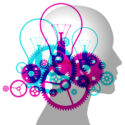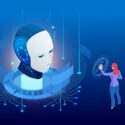
Is coding truly the next skill and technology to learn as an administrative professional? asks Vonetta Watson
To fairly answer this question, we should first examine the ‘Modern Workplace and Worker,’ the Fourth Industrial Revolution, and coding as a transferable skill.
Setting the Stage
In 2016, I made one of the boldest moves in my career: I decided to step away from my role as Director of Technology and Education for a non-profit outreach. Why? I wanted to extend my reach beyond one community and help springboard training, tool up, and reskill the next generation of the workforce. Simply put, I wanted to be an intricate part of the next industrial and technological revolution. I believe that we live in a world that is technology-inspired and people-driven.
Let’s fast forward to September 2018, in my 11th year at the Microsoft Ignite Conference (for IT pros, developers, and software architects). The driving theme over the week-long conference was edge computing, AI (artificial intelligence), IoT (internet of things), and how companies worldwide were implementing innovative technologies to drive efficiencies: the modern workplace and worker.
Upon my return, I wrote an article, Shift Happens. The article addresses adopting the ‘Modern Workplace and Worker,’ ongoing technology shifts, and mindset. I heard countless claims of organizational complacency and a disregard for digital transformation; however, some understood and were appreciative of the training gained. It was time to reevaluate our adaptability. If you were not ready, it was time to get ready regardless of where your organization stood in the technological evolution. And BOOM – on March 11, 2020, our world and the way we interact and work shifted to the modern workplace and worker.
The Modern Workplace and Worker
The modern workplace is a term that identifies organizations that recognize the technological evolution and are willing to provide workers with the necessary technology and tools that drive collaboration and efficiency. However, merely utilizing the term to refer to one’s company does not make it a modern workplace; it is rooted in two methodological principles.
Becoming a modern workplace can be challenging. It is a collaborative endeavor! We must understand that shifting is not easy nor just about technology; it is about the positive change that technology can bring through the people, projects, and processes it touches. However, this requires forward-thinking organizations that deeply desire a collaborative workforce and recognize that digital tools and technology can drive positive change.
Second, there are endless possibilities with the adoption of the modern workplace, which leads to the modern worker. Modern workers must be flexible, adaptable, and clearly understand that digital tools and technologies springboard productivity and efficiency; thus, how you work as an individual, with a team, and within your organization all play a significant role in your adaptability. The ability to seamlessly automate the collection of customer information and to track and schedule jobs and tasks at various data points can help you say goodbye to disconnected systems and processes – and create efficient workflow.
The Fourth Industrial Revolution (4IR)
Did you know that we are currently in the Fourth Industrial Revolution? This concept was first introduced in 2015 by an article and book written by Professor Klaus Schwab, Founder and Executive Chairman of the World Economic Forum:
“…together shape a future that works for all by putting people first, empowering them, and constantly reminding ourselves that all of these new technologies are first and foremost tools made by people for people.”
Professor Klaus Schwab
Professor Schwab’s words speak volumes. We create, use, and maintain technology, no matter the type. This also means that we must learn how to use technologies and evolve as the technologies evolve – become a modern worker. Previous revolutions took time to gain momentum and were prolongations of one another; however, the Fourth Industrial Revolution is unique and accelerated by 2020’s paradigm shift. Workforce expectations are rapidly shifting. To keep pace, we must close the skills gap, be open to shifts, and develop transferable skills. Where will your skills land you in the UniWorkVerse?
The Coding Evolution
Is coding truly the next in-demand job skill to learn as an administrative professional? This is not a simple yes or no answer, nor does it answer what coding language you should learn. The demand for coders and coding skills has been afoot since 2016, with predictions of being one of the most in-demand jobs over the following years. Why? Because coding is the language of our world and vital to businesses.
As administrative professionals, learning and adapting to software with minimal code is crucial. Coding is also transferable to tech-adjacent jobs, roles, and functions. It enhances creativity and writing skills, critical thinking, problem-solving, and a clear understanding of the proper technologies to use and when. Coding may seem like a new buzzword; I assure you it is not. The concept of coding has been around since the 1800s – yes, the 1800s.
We all use code every day in the form of no-code or low-code. I started coding in my twenties. It was a social media platform similar to Facebook, but there was no app; it was all online. I was excited to create my page. I adorned it with media, animation, the works. I did not realize that a little knowledge of HyperText Markup Language code (HTML 2) would stay with me forever and would not only move me into other technologies but also inspire me to learn HTML 3, 4, 5, and CSS as well as a little Java, Swift, and Python.
Bill Gates says that coding is not complex; it’s just “a little mathematics” and “If” statements (sound familiar?). Where are my Excel users? How many of you write your formulas or piggyback on functions? Excel is comprised of syntax codes. When you write a formula, you are essentially coding. When you master Excel, this opens the door to applications such as SQL or Power BI, for example. The office applications you use every day utilize coding regardless of the industry or software. Once you understand the backbone of that code, it makes it easier for you to adapt. A great example is SQL, which is used in Oracle and Ingres; of course, the code’s derivatives make it proprietary.
No-Code and Low-Code
Software such as BettyBlocks, KissFlow, Microsoft PowerApps, and Google App Maker are considered low-code applications. They offer quick, easy, drag-and-drop interfaces for fast, seamless software development with minimal code and in specific situations. No-code is precisely what it says: no code is required. Apps that come to mind are Mailchimp, Bubble App Builder, AirTable, Zapier, and Survey Monkey, allowing for a quick build and integration into almost any platform with the click of a button.
Begin Your Coding Journey
So, where do you go from here? Forward! Be creative and drive innovation. Begin your journey with what you know; you can upskill more quickly. If you are a Microsoft Word user, then step into Visual Basic. Google Suite user, AppSheet. Just for fun, try building a no-code app with your family or a group. Want to challenge yourself outside of work? Take an online course for Python, R, Ruby, or Go. The possibilities are endless! Learn, grow, and go!













